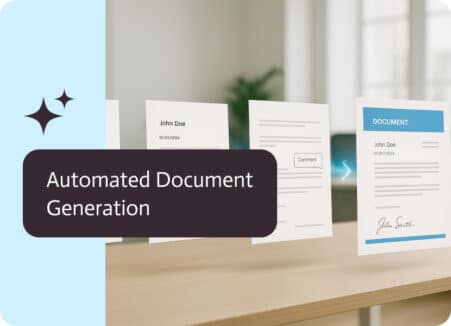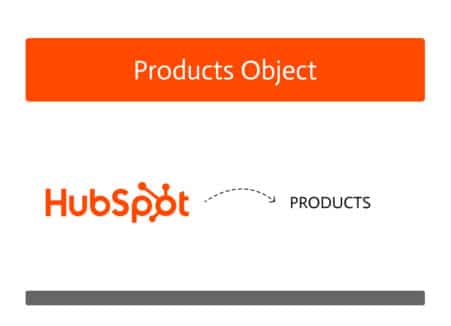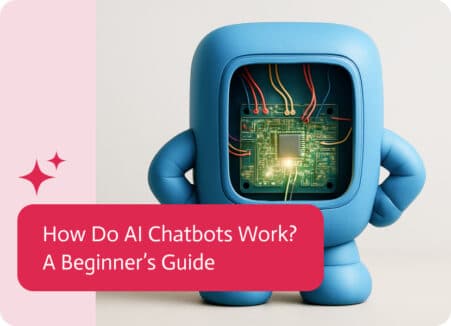

HR Software Integration Explained
HR software integration is really just tech speak for linking up the different programs that human resources teams use every day. Picture payroll, recruiting, time tracking, benefits, and file cabinets full of employee info, all talking to one another instead of humming in isolation.
Think of each HR app as a worker locked in its own cubicle. The old way had them trading paper memos back and forth. Integration slaps them onto a shared messaging app so news fires off in real time and nobody rewrites the same report twice.
Why You Should Care More Than You Probably Do
Most HR shops juggle half a dozen tools and then some hiring platform, a paycheck engine, a performance dashboard, and whatever they use for vacation requests. When those gadgets refuse to swap data, staff spend way too long gluing spreadsheets together like it’s the early 2000s. That sort of patchwork creates slowdowns, opens the door to compliance headaches, and makes the whole employee experience feel, well, lurchy.
HR tech used to be all smoke and mirrors, but smart integration is more like the calm stage crew that preps every light and mic you never notice, until they screw up. When it works, the layout glides.
Crushes the Cliques
Think of info silos as that one lunch table where nobody invites the new kid. Recruiters stash insights in the ATS, finance hoards numbers in another app, and payroll acts like it runs on Martian time. Connecting those programs lets info tumble from one to the next without password drama. No more god-awful copy-paste marathons, no scrambling to find the real job title, and no Did you update that? texts flooding your inbox.
Stops the Treadmill
Copy an address into four systems, and you’ll start to hear the sound of your own willpower grinding away. Automated hooks between tools replace that busywork, so a promotion nudges benefits, time off, and pay screens at once. Fewer clicks mean fewer slip-in mistakes and way better morale. With the minute-wasting errands off the desk, teams can finally chat strategy instead of sorting through papers.
Boosts the Employee Experience
Picture a new hire opening their laptop on Day One. If logging in feels more like cracking a safe than starting a job, you’re already behind. A single, connected platform lets them type their info once and watch it magically settle into payroll, benefits, and whatever else. The shinier the tech, the quicker they plug in, and that instant win sets a great tone for the weeks ahead. Staff survey after staff survey shows that smooth onboarding is half cool software and half the feeling that someone is actually paying attention.
Tightens Accuracy and Compliance
Spreadsheets drifting apart are like pieces of a puzzle that look similar but not really. A nicked letter here or a stale number there can grow into missed paychecks, trust gaps, and, honestly, a lot of eye-rolling. One master record tamed with good integration by flagging errors before anybody notices. Regulatory ghosts, HIPAA, FMLA, and GDPR, quit haunting the place when paper shuffling turns into automatic flags and tidy audit trails. Reliable reports don’t just save time; they stop the calendar from flashing red the minute an inspector walks in.
Smarter Reporting and Workforce Insights
Picture this: you sit down to run a quick trend report, but half the numbers refuse to play nice. That headache disappears if your software stacks talk to one another. When payroll, talent, and learning systems share the same language, turnover, performance, training completions, and pay changes sync up automatically. HR pros can then act on real-time data instead of guessing in the dark. Clean, connected insights turn a total mess into clarity.
Common HR Systems That Blossom With Integration
The buzzword integration often sounds glossy, but at its heart, it just means getting your daily tools to speak the same language. When the software stacks line up, chores shrink and busywork disappears.
HRIS
Human resources information systems is really the nerve center for everything about your people. Plug in other tools, and suddenly birthdays, pay grades, and performance scores stay fresh without repeated data entry.
ATS
An applicant tracking system pours resumes, interview notes, and offers straight into your HRIS so a new hire lands in payroll instead of limbo. That seamless handoff saves recruiters from copy-pasting on a Friday afternoon.
Payroll/Compensation
If salary bumps, tax brackets, or bonuses mimic spreadsheet row entries, the books stay balanced. Connecting payroll software eliminates the guessing about whether last month’s raise made it.
Time & Attendance
Punch clocks and project timers drift into payroll on the same pipeline, letting managers invoice clients without crossing their fingers. Accurate times mean less arguments over who burned the midnight oil.
Benefits Administration
Births, deaths, and open enrollment choices travel with an employee’s profile, cutting the paperwork hamster wheel. One click updates coverage instead of five faxed forms.
Learning Management Systems
Course completions and certification deadlines sync with talent maps, so no one graduates boot camp only to realize the badge isn’t in their profile. Training gaps show up faster than ever.
Performance Tools
Reviews, feedback loops, and succession grids pull from HRIS and LMS data, letting leadership see growth lanes in one dashboard. Goals set in January don’t evaporate by March when all the systems talk.
How HR Integration Actually Happens (And Doesn’t Break Everything)
Ever wonder how payroll, benefits, and recruiting suddenly start talking to one another without everyone losing their minds? The behind-the-scenes tricks can be surprisingly straightforward. A handful of tried-and-true connection methods do most of the heavy lifting.
APIs: The Real-Time Wizards
Application programming interfaces these days, are the modern connective tissue. They’re essentially little translators that make sure one piece of software understands what another is saying. Submit a vacation request in your time-off portal, and boom, the payroll app reflects the change while you’re still scrolling through your emails. Fast, efficient, and usually scalable, allowing the handling of company growth on the fly, APIs do come with a catch: decent documentation and a bit of coding know-how are pretty much non-negotiable.
Middleware: The Data Traffic Cop
Not every legacy tool comes with a shiny API tucked inside, and that’s where middleware swoops in. Different platforms pull data from one app, tweak it if needed, and then send it off to the next stop. They’re part translator, part traffic manager, and they save you from the headache of forcing two stubborn systems to get along. Because these services sit in the middle, they can cost a bit more, but the hassle they avoid is definitely beneficial.
Native Integrations
A lot of today’s HR software plugs right into the tools you already use. Click a button, link your Slack, or push events into Google Calendar, and it’s done. That’s the charm of a native integration: quick, clean, and almost zero upkeep. The catch is that the shiny new toy doesn’t always fit every odd-shaped job, so the pick-and-click style can run out of room before your imagination does.
Custom Integrations
Some workflows are so one-of-a-kind that cookie-cutter links just won’t cut it. In those cases, companies either ask their developers to stitch something together or hire outside pros to play digital handyman. Customized hooks pull payroll into a legacy CRM or marry hiring data with home-grown scheduling toolsl. On the flip side, the build usually costs a bundle up front, and someone’s got to nurse it along every time the underlying tech decides to change its mind.
How AI Supercharges HR Software Integration (And Saves HR From Losing Its Mind)
If HR software integration is the highway connecting your framework, then AI is the traffic controller that keeps everything flowing, without wrecks, detours, or someone yelling, “Where’s that report?!”
Smart integration wires your apps together, but the kind of smarts people talk about today is really the AI layer on top. Instead of just pushing numbers around, the system reads, tweaks, and sometimes even suggests what to do next. For HR pros already stretched thin, that feels like snagging a round-the-clock helper that never flubs a name and never clocks out.
There’s always the issue of matching fields. One database says “First Name,” another insists on “Given Name,” and yet another cryptically shows “FName.” You could eyeball every row until your eyes cross, or you could let AI do the heavy lifting. The new engine spots patterns by itself, nudges you with tidy pair-ups, and learns your quirks for the next go. It is a lot like typing in a text box and having your phone figure out the word right before you finish.
Spotting Dirty Data Before It Spreads
Garbage in, garbage out is the old saying, and it still hits home. If sketchy numbers creep into your system, everything that rides on them ends up shaky. Recent AI tools hunt for missing digits, stray duplicates, or blank fields the instant the data slides through the door. Slip-ups like a phone number with only six digits or a hire date plopped on a holiday get flagged or quietly fixed, without you lifting a finger.
The software works like a sharp-eyed copy editor, tidying up names, dates, and dollar signs long before they touch your HRIS or payroll screens. The result? No more wacky budget reports or strange pay stubs because somebody accidentally typed $75k where the job-title box should have gone.
Predicting Integration Breakdowns
Integration dramas rarely hit the stage with a bang; they unravel thread by thread until the whole picture looks wrong. Real-time AI monitors keep an eye on those threads, measuring lags, failed syncs, and tiny mismatches long before chaos breaks out downriver. Picture it as a smoke alarm that not only starts beeping but also hands you a map showing exactly which wire is smoldering. By the time a human steps in, the biggest mess is already dodged.
Smarter Workflows and Automatic Triggers
Everyone loves a good shortcut, and AI serves them up with style. Picture a brand-new employee showing up in the HRIS; within seconds, the system spins up a fresh email account, books orientation, and even pings the boss to schedule a welcome coffee. No mouse-clicking required.
Promotions are another big moment. When a manager lifts someone up the ladder, the same brain updates pay scales, adjusts permissions, and checks whether the worker still fits under that old health plan.
These moves aren’t one-size-fits-all. The software watches what happens, learns the quirks, and gradually rewrites the playbook so the next hire or pay bump runs even smoother. Think of it as Zapier with a memory and an HR degree.
Talks to Old Tech
Stuck babysitting that dinosaur time tracker? Nobody wants to switch? AI waves hello anyway. It scans dusty spreadsheets, clunky PDFs, or rumpled email threads, picks out pay periods and hours, and neatly files everything where it belongs.
Older systems rarely offer shiny APIs, yet that doesn’t stop the helper. Natural-language tricks and pattern-spotting chops turn the chaos into structured data, then slip it into newer platforms without any extra elbow grease from the team.
Boosts Smart Decision-Making on Every Platform
After all your tools are talking to each other and your data is gliding along like it should, the real fun begins. Artificial intelligence steps in to scan the information in its own context. Curious whether faster onboarding times really keep employees around? Or how do training grades line up with the performance reviews your team sends out? The software stitches together pieces that might feel lost in a tower of dashboards and endless spreadsheets.
Because the tech picks up patterns, it doesn’t just share the numbers from last quarter; it starts guessing what could be brewing next month. That moment when raw integration morphs into clear, usable insight is where the magic shows up.
How Noca AI Makes HR Software Integration Frictionless
So you’re sold on the idea of AI-powered HR integration—but where do you start? Enter Noca AI.
Noca isn’t just another automation platform tacked onto your stack. It’s a purpose-built integration layer that understands the unique chaos of HR systems and turns it into smooth, intelligent automation. Think of it as a translator, traffic controller, data janitor, and strategic partner—all rolled into one AI-powered brain. Noca gives you proactive integration that’s smart, scalable, and built for how HR teams actually work. Whether you’re a 50-person startup or an enterprise juggling global payroll, Noca turns your chaotic software ecosystem into a synchronized machine, with insights and automation baked into every step.
Bottom Line: AI Makes Integration Smarter, Not Just Faster
Traditional integration is about connectivity. AI-powered integration is about intelligence. It doesn’t just move data—it understands it, improves it, and puts it to work. For HR leaders trying to juggle compliance, experience, and performance, AI isn’t just a nice-to-have. It’s the digital teammate you didn’t know you needed.
And while AI won’t replace the human side of HR (the empathy, the judgment, the culture-building), it does free up your team to focus on those things by taking care of the complex, boring, and error-prone stuff in the background.


